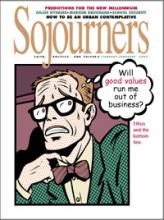On the subject of vocation, French philosopher Simone Weil wrote that "the most beautiful life" is one "where everything is determinedàwhere there is never any room for choice." Three recent accounts of commitment to faith communities question whether Weil was right. Should obedience to a calling leave room for choice?
The best of these, Nora Gallaghers Things Seen and Unseen: A Year Lived in Faith, relates personal and congregational events at Trinity Episcopal Church in Santa Barbara, California. A baby-boomer journalist whose outlook is deeply nonconformist, Gallagher returned to church in the late 1980s and has since found herself a leader at Trinity. During the Advent-to-Advent year Gallagher describes, she works, sometimes daily, at a meal program for the homeless she helped establish in the parish hall.
She also serves communion, plans services, and participates in the careful building of a consensus to call a gay man to be Trinitys rector. While Gallaghers brother is succumbing to cancer in her home state of New Mexico, she is fed by weekly check-ins with her "base community," by encounters with sick and dying members of the congregation, and by walking with a pilgrims spirit a large canvas labyrinth. All along, Gallaghers calling feels like a "hand held against [her] backàa firm, insistent pressure between her shoulder blades" that is "a felt presence, unnerving and unmistakable."
Read the Full Article
